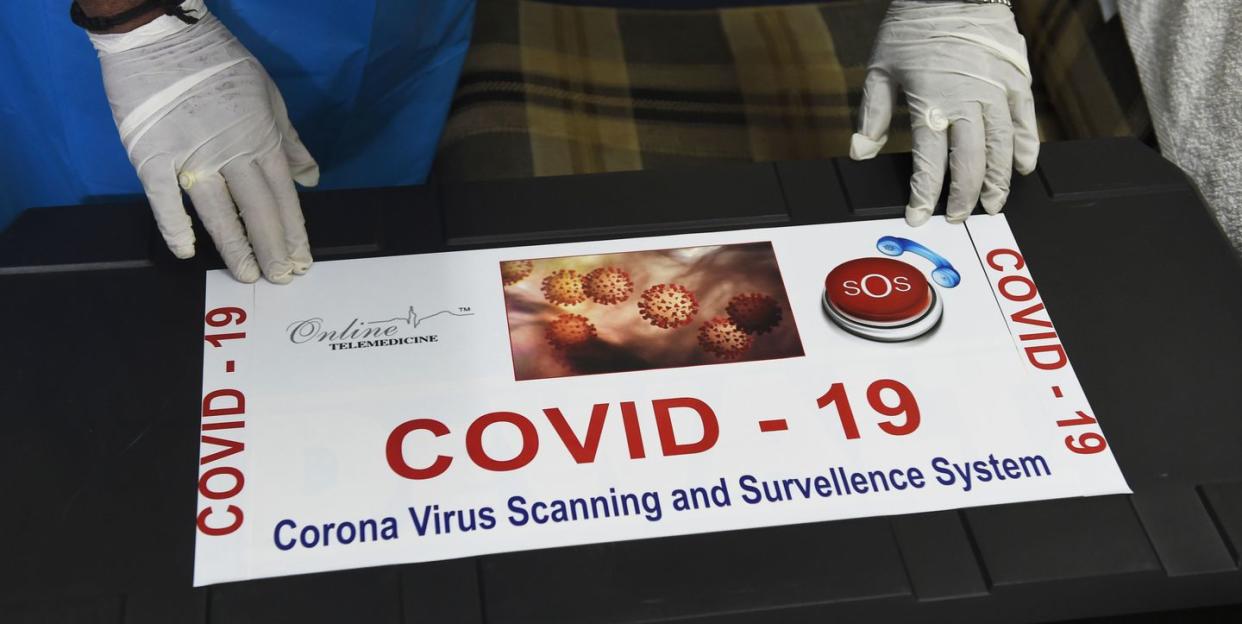The Novel Coroanvirus Was Just Declared A Global Pandemic

It’s not every day that a respiratory illness becomes the primary point of conversation in the U.S., but the new coronavirus, which causes the illness known as COVID-19, has certainly reached that status. It's been officially declared a global pandemic by the World Health Organization.
The virus, which originated in China, has so far infected 132,758 people worldwide according the the World Health Organization, and killed more than 4,900 people across the globe. Currently, there are more than 1,500 confirmed or presumptively positive cases in the US, per the CDC. While it was originally categorized as an epidemic by the WHO back at the end of January, it has now surpassed that status.
But now that COVID-19 has officially been declared a pandemic, what exactly does that mean? And should you be doing anything differently?
What's a pandemic, again? And how is it different from an epidemic?
“There’s a lot of confusion about what a pandemic really is,” Sandra Kesh, MD, deputy medical director at Westmed Medical Group in Purchase, NY. Essentially, the WHO calls the shots on declaring an outbreak a “pandemic,” but may be careful about doing so because they don’t want the general public unnecessarily afraid of what is going on, she says.
A pandemic essentially meets three criteria, says Dr. Kesh: it has sustained person-to-person spread; it causes illness, including death; and it affects a large number of people with a worldwide spread.
Meanwhile, an epidemic means there’s been a sudden increase in the number of cases of a disease beyond what would be normally expected, says the Centers for Disease Control and Prevention (CDC). You might see an “outbreak” of a disease in a certain area of the world, for example, but not necessarily throughout the entire world.
What are the phases of a pandemic?
If you really want to get into the weeds about pandemics and their nitty-gritty meanings, you can check out the WHO’s description of the phases of a pandemic. Without jumping too far into it, know that there are six phases, ranging from essentially “nothing is going on” to there’s “human-to-human transmission” and outbreaks in the community to “there are outbreaks over the world.” Following the six phases, there’s also the “post-peak period,” where the number of cases is slowing down to the “post-pandemic period” where levels have returned to normal.
Each phase informs how officials keep their citizens (us!) safe. It’s cool to understand, but don’t worry too much about the exact phases—except for that last one, when it’s declared over and you can breathe easier. (Still: wash your hands!)
What are some examples of past pandemics?
The CDC has a whole section dedicated to pandemic history (see it here). There have been four pandemics. Most recently, there was the H1N1 Pandemic in 2009. You probably know it better as the swine flu, which killed up to 575,400 people in the world during its first year, and hit adults younger than 65 years old the hardest. (Unlike COVID-19, which is particularly deadly for older adults.) It lasted until August 10, 2010, though the virus is now a common strain of flu that we see every season.
Before that, you had the 1957-1958 Pandemic, the 1968 Pandemic, and the 1918 Pandemic. The CDC calls the 1918 flu pandemic as the “most severe pandemic in recent history,” as it infected one-third of the world’s population and killed 50 million people.
What happens now that COVID-19 has been declared a pandemic?
It shouldn’t change what you’re doing—or at least should be doing—right now, which is practicing basic hygiene practices to reduce your risk of disease, whether that's COVID-19, the seasonal flu, or the common cold. That includes washing your hands properly, using hand sanitizer liberally, avoiding common, and high-touch spots, like railings and doorknobs (if you do touch those, wash or sanitize your hands), and staying away from people who are sick or coughing or sneezing. The CDC also recommends you stop touching your face so darn much, because that gives the virus entry into your body.
WHO Director-General Tedros Adhanom Ghebreyesus emphasized that they'll continue fighting the spread of COVID-19: "Describing the situation as a pandemic does not change WHO’s assessment of the threat posed by this coronavirus. It doesn’t change what WHO is doing, and it doesn’t change what countries should do," he added.
So, carry around your hand sanitizer, consider avoiding handshakes, and stay home if you’re sick. An epidemic or pandemic does not mean, though, that you should make a run on bottled water and buy all the toilet paper you can find. That is, if there’s any still left on shelves.
You Might Also Like

